Support Village Voice News With a Donation of Your Choice.
…Trafficking of boys increasing; COVID-19 worsens situation
A report from the United Nations Office on Drugs and Crime (UNODC) shows that the number of children who are victims of trafficking-in-persons (TIP) has tripled in the past 15 years and the COVID-19-induced recession is likely to expose more people to the risk of trafficking.
According to the report launched on Tuesday and titled ‘Global Report on Trafficking in Persons’, findings show that girls are mainly trafficked for sexual exploitation, while boys are used for forced labour. The share of boys has increased five times over the last 15 years.
In 2018 alone, about 50,000 human trafficking victims were detected and reported by 148 countries though it is suspected that, given the hidden nature of this crime, the actual number is far higher.
The Report shows traffickers particularly target the most vulnerable, such as migrants and people without jobs. Female victims continue to be the primary targets for trafficking in persons. For every 10 victims detected globally in 2018, about five were adult women and two were young girls. Around 20 per cent of human trafficking victims were adult men and 15 per cent were young boys.
Over the last 15 years, the number of detected victims has increased, while their profile has changed. The share of adult women among the detected victims fell from more than 70 per cent to less than 50 per cent in 2018, while the share of children detected has increased, from around 10 per cent to over 30 per cent. In the same period, the share of adult men has nearly doubled, from around 10 per cent to 20 per cent in 2018.
Overall, 50 per cent of detected victims were trafficked for sexual exploitation, 38 per cent were exploited for forced labour, six per cent were subjected to forced criminal activity, while one per cent were coerced into begging and smaller numbers into forced marriages, organ removal, and other purposes.
Victims’ profiles differ according to the form of exploitation. The share of detected victims trafficked for forced labour has steadily increased for more than a decade. Victims are exploited across a wide range of economic sectors, particularly in those where work is undertaken in isolated circumstances including agriculture, construction, fishing, mining, and domestic work.
“Millions of women, children and men worldwide are out of work, out of school and without social support in the continuing COVID-19 crisis, leaving them at greater risk of human trafficking. We need targeted action to stop criminal traffickers from taking advantage of the pandemic to exploit the vulnerable,” said UNODC Executive Director Ghada Waly.
“The UNODC Global Report on Trafficking in Persons 2020, coupled with the technical assistance UNODC provides through its global programmes and field network, aims to inform governments’ anti-trafficking responses, end impunity, and support victims as part of integrated efforts to build forward from the pandemic,” Waly added.
Globally, most persons prosecuted and convicted of trafficking in persons continue to be male, with around 64 and 62 per cent respectively. Offenders can be members of organized crime groups, which traffic the great majority of victims, to individuals operating on their own or in small groups on an opportunistic basis.
Traffickers see their victims as commodities without regard for human dignity and rights. They sell fellow human beings for a price that can range from tens of US dollars to tens of thousands, with large criminal organizations making the highest incomes.

















